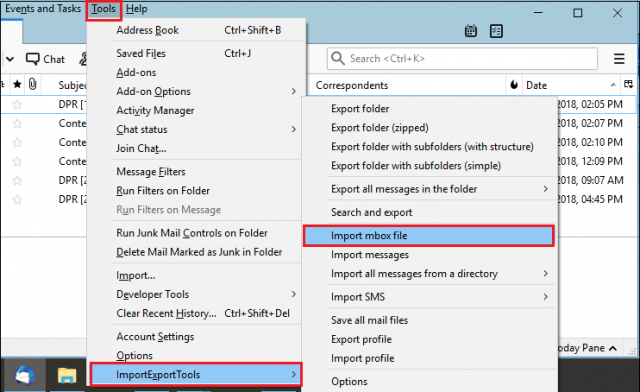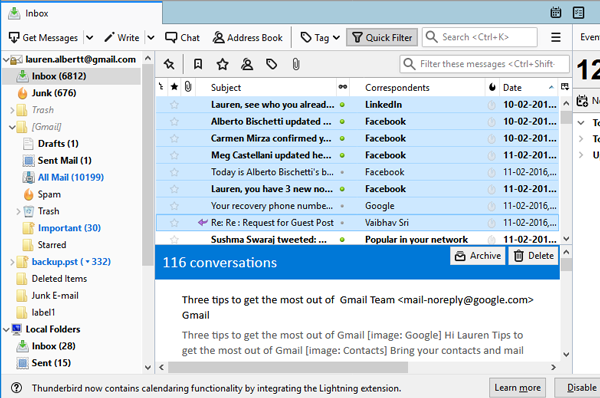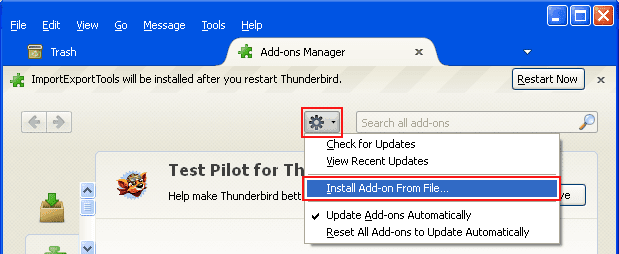

- #WHERE ARE MOZILLA THUNDERBIRD FILES STORED OFFLINE#
- #WHERE ARE MOZILLA THUNDERBIRD FILES STORED WINDOWS#
msf file of the child folder will get stored in. Name of the folders are according to the parent folder to which child belongs.Īs an example, if you create a mail folder under Inbox folder, then mailbox file as well as corresponding. When you create a new folder within some of the existing for the very first time, Thunderbird automatically creates a SDB folder for storing email data of child folder. They are used for holding a hierarchy of all the mail folders.

About Thunderbird SBD foldersįolders which have SBD file type are basically designed for a subfolder management.

Thunderbird will reconstruct MSF files as per the requirement if they are missing. Thunderbird shows the part of message to be displayed, the arrangement of messages within the folder, and many more, entirely based on the MSF file info.

The corresponding MSF file comprise of mail folder indexes and preference data. This file is actually larger in size than MSF which is the index file.
#WHERE ARE MOZILLA THUNDERBIRD FILES STORED WINDOWS#
Also, make sure to adjust Windows Explorer settings in order to show hidden objects. Here, input the %AppData% first in the file explorer and then move to the next folder. %AppData%\Thunderbird\Profiles\fault\Mail\ In Windows Thunderbird stores email databases in the profile folder which is located in the following mentioned location: Another way to compact foldersįor IMAP accounts, Thunderbird can automatically compact the Inbox when you exit: click "Tools -> Account Settings -> Server Settings", and check "Clean up ('Expunge') Inbox on Exit." If you check "Empty Trash on Exit" it will empty and compact the Trash folder when you exit.Thunderbird Email Database Location in Windows For IMAP accounts: you cannot compact folders unless you are online.
#WHERE ARE MOZILLA THUNDERBIRD FILES STORED OFFLINE#
For POP3 accounts: if Offline Support is installed, first go offline ("File -> Offline-> Work Offline", or simply click on the icon that looks like a lightbulb in the bottom left corner). Note: try to avoid downloading e-mail while compacting folders, as it's been reported that this can cause corruption or a "folder being processed" error. If you have trouble doing this and the process stalls, try compacting one folder at a time: click on the folder and choose "Compact This Folder". Compacting an account may take a few seconds or a few minutes, depending on how much mail you have and how recently you've compacted folders. To compact all folders in an account: click on the account on the left, and then click "File -> Compact Folders". The main difference is that most other email clients by default automatically compact the folder when a certain amount of space is wasted. It isn't some unique feature of Thunderbird. If you don't compact folders your mail folders can grow very large and the program can behave erratically, so it's a good idea to do it periodically.ĭon't confuse compacting folders with compressing files. These hidden e-mails remain in the folder until it is compacted. Even emptying the trash does not permanently delete them. When you delete or move e-mails from a folder, Thunderbird and other e-mail programs really only "hide" them ( i.e., mark them as ready for permanent deletion), and these hidden e-mails still actually remain in the folder. Following is an excerpt from the Thunderbird knowledge base article and instructions for compacting folders.


 0 kommentar(er)
0 kommentar(er)
